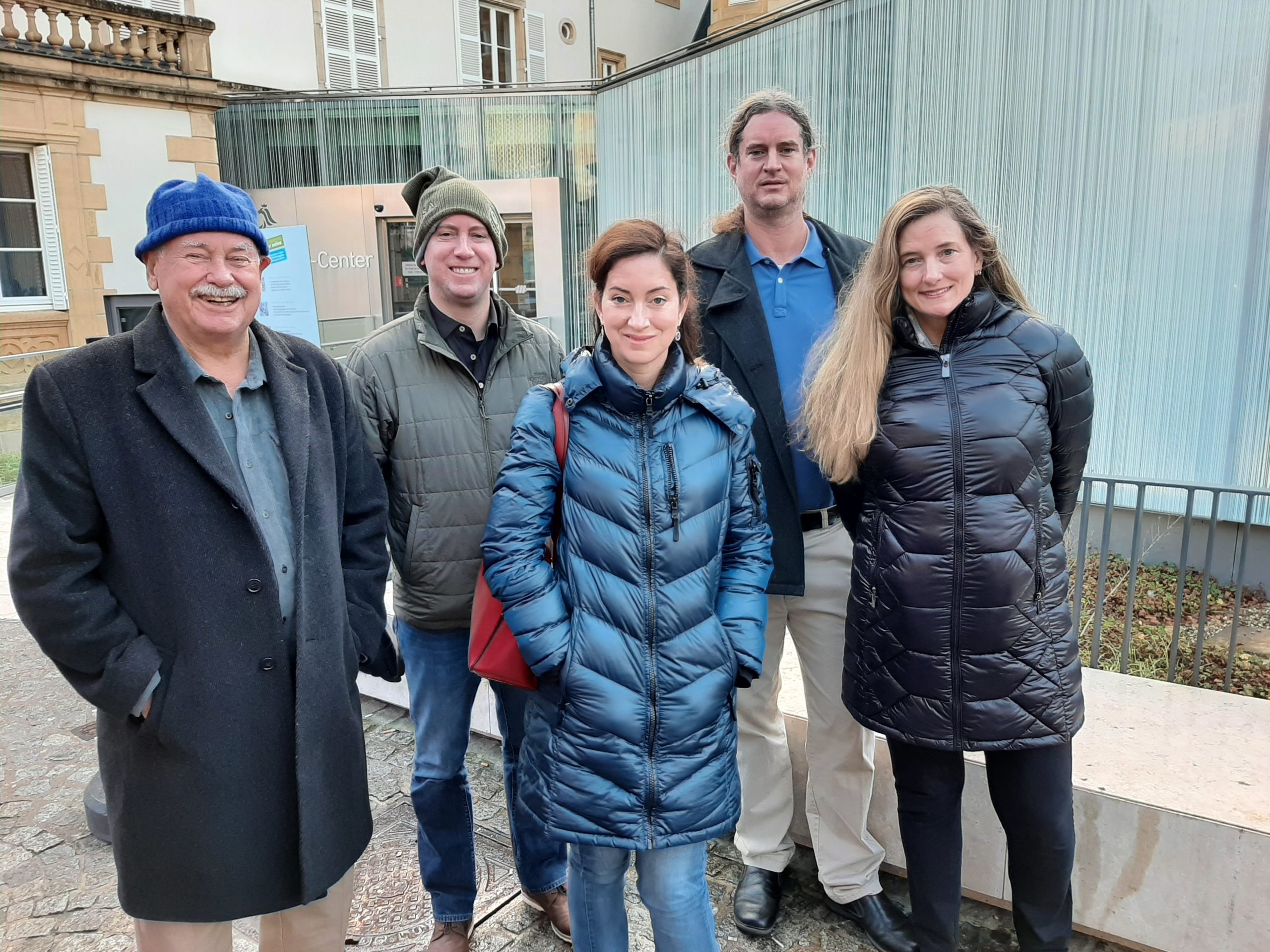Meet The Luxembourg Dual Citizen-Owned Businesses! – Click Here To Learn More
This article dates from March 24th, 2022. Some information is now out of date. We are leaving this article here for archival purposes.
By the time of its next national legislative elections in 2023, there will be a new “town” in Luxembourg that did not exist during its last elections in 2018. That town will be equivalent to the population of Pétange, the country’s fifth largest population center, and have more eligible voters in it than Esch-sur-Alzette, the country’s second population center. But what makes this new “town” remarkable is that it will be made up exclusively of Americans and Brazilians.
Our video about the Luxembourg Dual Citizen Study
In fact, by December 31, 2022, US-born individuals who have obtained dual citizenship in Luxembourg will be equivalent to at least 1% of its national population. Brazilian-born dual citizens, at least another 2%. Why on Earth is this happening?
Land of Unexpected Growth
In 2008, Luxembourg liberalized its historically strict Nationality Act to allow for dual citizenship for the first time. The Act also created a temporary measure which enabled the direct lineage descendants of any Luxembourg citizen alive on January 1st, 1900 to reclaim the ancestor’s citizenship. In fact, no one in Luxembourg would expect just how popular this measure would be.
By the end of 2018, the Government received 47,472 qualified initial applications, equivalent to 7.6% of the country’s total population. What was even more unexpected, was nearly half of the applications came from 4,509 Americans and 15,477 Brazilians. For a country of 634,700 total residents (of which only 335,300 citizens), these are significant numbers.
Americans, Brazilians Obtaining Citizenship, By Year
As The World Turns
By the start of 2022, 16,043 people still needed to get to Luxembourg to complete the citizenship application before the final deadline. This included 1,996 Americans, 10,342 Brazilians and 3,705 others (largely French, German, and Belgian).
Undoubtedly, some of these applicants will never make it before the final deadline. However, the ministry’s statistics do not include the applicants’ minor children or the Americans and Brazilians applying through other citizenship procedures.
So by all assessments, 19,986 dual citizens will be a very conservative final number of these new Luxembourgers through ancestry. Why does that matter? This figure alone already makes up equivalent to 3% of Luxembourg’s national population and 8% of its eligible voters (259,887).
US, Brazilian Dual Citizens Equivalent to
8
of Luxembourg’s eligible voters
In fact, the capital Luxembourg City would be the only city in Luxembourg with more eligible voters than this new grouping.
A Political Impact
Voting is not an obligation for Luxembourg citizens aboard. Therefore, it is reasonable to assume that not even half of these new citizens are likely to vote in the 2023 election. But all the new citizens who will vote by absentee ballot will do so by default in Luxembourg City.
Luxembourg by Voting Districts
- North Voting District
- South Voting District
- East Voting District
- Center Voting District
Therefore, even if a minority of the new citizens do vote, it could have a real impact on the outcome of the election for the Center circumscription, one of Luxembourg’s four voting districts. The Center circumscription is Luxembourg’s second largest, representing about 72,986 voters in the 2018 election. The Center Circumscription elects 21 of the 60 deputies that make up the Chamber of Deputies, or Luxembourg’s Parliament.
When we look at the raw numbers it’s clear that this new population could have a real impact on the future of the Grand-Duchy of Luxembourg. However, very few people on the ground in Luxembourg have ever met any of these dual citizens through ancestry.
With this in mind, it’s very hard for anyone to know who these people are and how best to integrate them into Luxembourg’s society.
LuxCitizenship’s Dual Citizen Case Studies
That’s where we come in. Back in 2018, we at LuxCitizenship wanted to try to establish if we could find any similarities in the applicants’ data that would help us to better understand the who and why of Americans applying for Luxembourg citizenship.

Taking anonymized meta-data from around 300 future dual citizens’ application paperwork and the data we established after studying their ancestors’ migratory patterns, we began to visualize the data. We called this “The American-Luxembourgers Study”. Now, in its fourth edition, it covers over 1,000 American dual citizens.
Despite much smaller immigration waves from Luxembourg to Brazil, there are 3.4 Brazilians applying for dual citizenship for every American. We wanted to find out why. In 2021, we also conducted an open survey of over 200 Brazilian Luxembourg Dual Citizens to further expand our study.
Our Luxembourg Dual Citizen Case Studies include 3 articles about each group, the Americans and the Brazilians. You can visit each by clicking the links below. The articles explain:
1. Who Were the Luxembourgish Ancestors That Immigrated To The Country (USA | Brazil)
2. Who Are the Luxembourg Dual Citizens Today (USA | Brazil)
3. A Survey of The Dual Citizens (USA | Brazil)
The results, both where each population is similar and where they diverge, can spark significant points of research on their own. Let’s start by exploring some of the similarities.
Surprising Similarities Despite Differences
LANGUAGE Luxembourgish is the language of the heart for all Luxembourgers, and has been for some time. In the immigrant communities that left for the New World, the practice of speaking Luxembourgish remained strong. However, in the United States during World War I and in Brazil during World War II, people were effectively banned from speaking German. Because others didn’t understand the difference, Luxembourgish communities were collective victims of these policies. Most children born during this time and after rarely had the opportunity to learn Luxembourgish.

Generally, only 22% of American respondents and 45% of Brazilian indicated that they speak a foreign language fluently. So that makes it so interesting that exactly 84% of both the American and the Brazilian dual citizen applicants indicate that they want to learn Luxembourgish. The historic role lingers.
GEOGRAPHY Throughout both our Brazilian and American Luxembourg Ancestors studies, we found that the Luxembourgish immigrants tended to immigrate to similar regions in the destination country and then slowly branch out.
In the USA, the Luxembourgish immigrants concentrated in Minnesota, Wisconsin, Iowa, and Illinois. In Brazil, Santa Catarina, Parana, Rio Grande do Sul, and Espirito Santo States.
Luxembourgish Immigration: Popular States
Today, Minneapolis and Florianopolis may have more Luxembourgish citizens living there than many communes in Luxembourg. By our own research, the Minneapolis-Saint Paul area has more eligible Luxembourgish voters (est. 888) than Heffingen in Luxembourg’s Center electoral circumscription (774 voters).
INTEREST TO MOVE Both the Americans and Brazilians surveyed indicate a high total interest in moving to Luxembourg or the EU. 79.4% of the American and 90.6% of Brazilian respondents indicate that they are interested to move at some point.
However, the timing varies. The vast majority of the Brazilian respondents are interested to move in the next five years, 44% in 1-2 years and 23% in the next 3-5 years. The Americans on the other hand are more likely to not have exact plans or to think about later in life, only 13% are interested to move in the next 1-2 years and 28% in 3-5 years.
American Luxembourgers: When to Move?
DIFFERENCES The differences in motivations for the two populations seem to go hand-in-hand with the timelines for moving. Among the top four reasons motivating Brazilians to apply, they indicated: thinking in the interest of my children/grandchildren, pride in Luxembourgish heritage, and interest to work in Luxembourg/EU.
Among the American respondents’ top 4 were pride in my Luxembourigsh heritage, desire to reconnect with land of my ancestors, and I am interested in retiring in Luxembourg/EU.
Both populations represent a high percentage of people that have attended university level education. However, their individual career paths are divergent. A high percentage of the American Luxembourgers work in education and healthcare, while the largest percentage of the Brazilian population works as civil servants.
Conclusion
When Luxembourg’s government set out to liberalize its citizenship law in 2008, no politician would have ever imagined that only a few years later, that there would be a new “town” in the Grand Duchy made up of Americans and Brazilians. Nor could they imagine that this grouping could possibly have such a considerable impact on Luxembourg in the years to come.
Our research would indicate that they underestimated just how proud to be Luxembourgish the New World Luxembourgers were.

